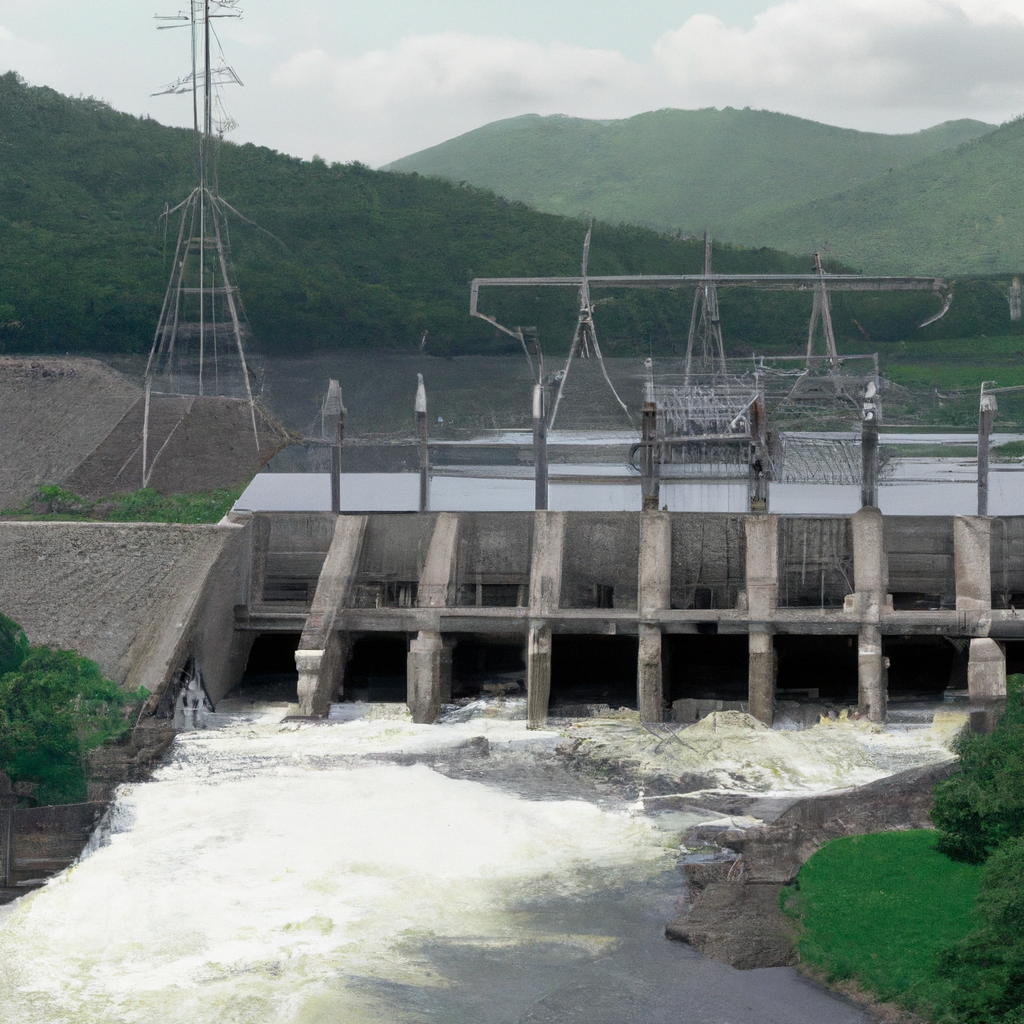Dams are structures built to impound water and create large artificial lakes or reservoirs. They are typically used for irrigation, water supply, flood control, and hydroelectric power generation. Hydroelectric power is a renewable energy source that produces electricity by harnessing the power of falling water. In this article, we will explore how a dam generates electricity and the process involved in electricity production.
How does a dam generate electricity?
A hydroelectric dam generates electricity by converting the energy of falling water into electrical energy. The process involves several steps that include:
1. Water intake
The first step in the generation of electricity from a hydroelectric dam is the intake of water. Water is drawn from the reservoir through the intake structure and directed towards the water turbine.
2. Water turbine
The water turbine is the heart of the hydroelectric power plant. It is a device that converts the kinetic energy of falling water into mechanical energy. The turbine rotates when water flows through it, which activates a generator to produce electricity.
3. Generator
The generator is a device that converts mechanical energy into electrical energy. It consists of a rotor and a stator. The rotor is connected to the turbine and rotates when the turbine rotates. The stator is a stationary component that houses the conductors that produce electrical energy.
4. Transmission lines
Once electricity is generated, it is transmitted through high-voltage transmission lines to the electrical grid, where it is distributed to homes, businesses, and industries.
5. Control systems
Control systems are used to regulate the flow of water and the operation of the water turbine and generator. They ensure that the hydroelectric dam operates efficiently and safely.
Advantages of hydroelectric power
Hydroelectric power has several advantages over other forms of energy production. These include:
1. Renewable energy
Hydroelectric power is a renewable energy source because it uses the natural flow of water to produce electricity. Water is continuously replenished by precipitation, making hydroelectric power a sustainable source of energy.
2. Clean energy
Hydroelectric power is a clean source of energy because it produces no emissions or pollutants. It does not contribute to air pollution, acid rain, or global warming.
3. Reliable energy
Hydroelectric power is a reliable source of energy because it can be produced on demand. The flow of water can be regulated to meet the demand for electricity, making it a flexible and responsive source of energy.
4. Cost-effective energy
Hydroelectric power is a cost-effective source of energy because it has low operating costs and long service life. Once a hydroelectric dam is built, it can provide electricity for decades with minimal maintenance costs.
Disadvantages of hydroelectric power
Despite its many advantages, hydroelectric power has some disadvantages that include:
1. Environmental impact
Hydroelectric dams can have a significant environmental impact. They can alter the natural flow of rivers, disrupt fish migration, and affect local ecosystems.
2. High upfront costs
The construction of hydroelectric dams can be costly, requiring large upfront investments. The costs associated with building dams can make it difficult for some countries to invest in hydroelectric power.
3. Limited availability
Hydroelectric power is not available in all regions. It requires the presence of large, fast-flowing rivers or a significant source of water to be economically viable.
Conclusion
In conclusion, hydroelectric power is a clean, renewable, and reliable source of energy that generates electricity by harnessing the power of falling water. Hydroelectric dams convert the kinetic energy of water into electrical energy through a series of steps that involve water intake, water turbine, generator, transmission lines, and control systems. Despite its many advantages, hydroelectric power has some disadvantages that include environmental impact, high upfront costs, and limited availability. However, with proper planning and management, hydroelectric power can be used to meet the growing demand for clean energy and contribute to a sustainable future.







